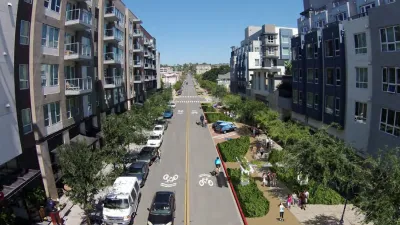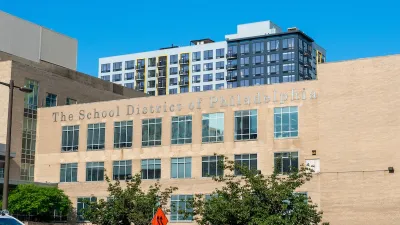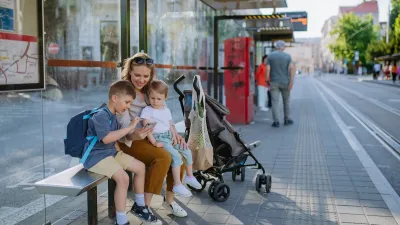Sarah Goodyear reports on a new study that illustrates the disastrous effect that commuting by car has on children's connection to their neighborhoods.
Goodyear looks at the research of Bruce Appleyard, son of noted urban researcher Donald Appleyard, who pioneered the study of the isolating effect of automobile travel, and a study he's conducted on groups of children in two suburban communities who had varying degrees of daily car travel. What he found was startling.
"Children who had a 'windshield perspective' from being driven everywhere weren't able to accurately draw how the streets in their community connected, whereas children who walked or biked to get around produced detailed and highly accurate maps of their neighborhood street network."
The degree of automobile travel effected more than just their ability to understand their surroundings, it also impacted their emotional response to their neighborhoods.
"In the Heavy [traffic exposure] neighborhood, the children frequently expressed feelings of dislike and danger and were unable to represent any detail of the surrounding environment...Participants from the Light [traffic exposure] neighborhood, on the other hand, showed a much richer sense of their environment, drawing more of the streets, houses, trees, and other objects, and including fewer signs of danger, or dislike and fewer cars...In sum, as exposure to auto traffic volumes and speed decreases, a child's sense of threat goes down, and his/her ability to establish a richer connection and appreciation for the community rises."
FULL STORY: Kids Who Get Driven Everywhere Don't Know Where They're Going

Trump Administration Could Effectively End Housing Voucher Program
Federal officials are eyeing major cuts to the Section 8 program that helps millions of low-income households pay rent.

Planetizen Federal Action Tracker
A weekly monitor of how Trump’s orders and actions are impacting planners and planning in America.

Ken Jennings Launches Transit Web Series
The Jeopardy champ wants you to ride public transit.

Rebuilding Smarter: How LA County Is Guiding Fire-Ravaged Communities Toward Resilience
Los Angeles County is leading a coordinated effort to help fire-impacted communities rebuild with resilience by providing recovery resources, promoting fire-wise design, and aligning reconstruction with broader sustainability and climate goals.

When Borders Blur: Regional Collaboration in Action
As regional challenges outgrow city boundaries, “When Borders Blur” explores how cross-jurisdictional collaboration can drive smarter, more resilient urban planning, sharing real-world lessons from thriving partnerships across North America.

Philadelphia Is Expanding its Network of Roundabouts
Roundabouts are widely shown to decrease traffic speed, reduce congestion, and improve efficiency.
Urban Design for Planners 1: Software Tools
This six-course series explores essential urban design concepts using open source software and equips planners with the tools they need to participate fully in the urban design process.
Planning for Universal Design
Learn the tools for implementing Universal Design in planning regulations.
Ada County Highway District
Clanton & Associates, Inc.
Jessamine County Fiscal Court
Institute for Housing and Urban Development Studies (IHS)
City of Grandview
Harvard GSD Executive Education
Toledo-Lucas County Plan Commissions
Salt Lake City
NYU Wagner Graduate School of Public Service





























